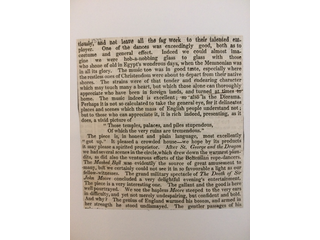Transcription
tiously, and not leave all the fag work to their talented employer. One of the dances was exceedingly good, both as to costume and general effect. Indeed we could almost imagine we were hob-a-nobbing glass to a glass with those who shone of old in Egypt’s wondrous days, when the Memnonian was in all its glory. The music too was in good taste, especially where the restless ones of Christendom were about to depart from their native shores. The strains were of that tender and endearing character which may touch many a heart, but which those alone can thoroughly appreciate who have been in foreign lands, and turned at times to home. The music indeed is excellent; so also is the Diorama. Perhaps it is not so calculated to take the general eye, for it delineates places and scenes which the mass of English people understand not; but to those who can appreciate it, it is rich indeed, presenting, as it does, a vivid picture of
“Those temples, palaces, and piles stupendous,
Of which the very ruins are tremendous.”
The piece is, in honest and plain language, most excellently “got up.” It pleased a crowded house—we hope by its products it may please a spirited proprietor. After St. George and the Dragon we had several scenes in the circle, which drew down the warmest plaudits, as did also the venturous efforts of the Bohemian rope-dancers. The Masked Ball was evidently the source of great amusement to many, but we certainly could not see it in so favourable a light as out fellow-witnesses. The grand military spectacle of The Death of Sir John Moore concluded a very delightful evening’s entertainment. The piece is a very interesting one. The gallant and the good is here well pourtrayed. We see the hapless Moore steeped to the very ears in difficulty, and yet not merely undesparing, but confident and bold. And why? The genius of England warmed his bosom, and armed in her strength he stood undismayed. The gentler passaged of his
